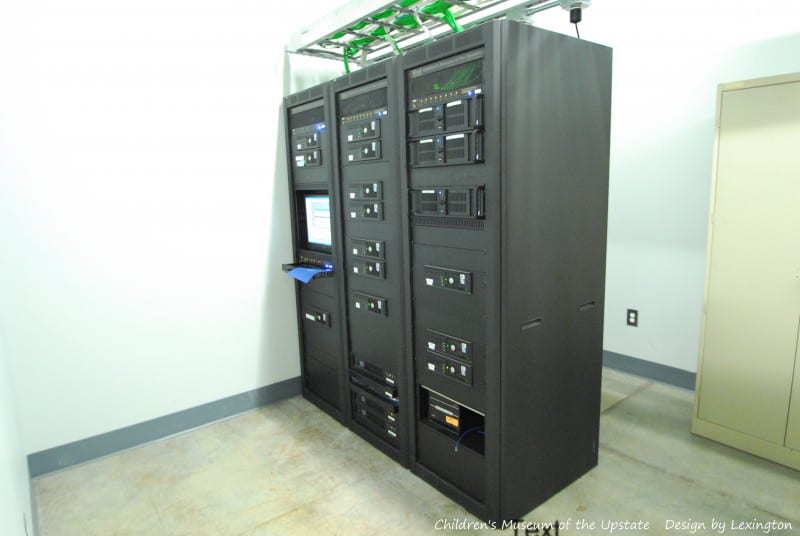Our previous article talked about the difference between Distributed and Centralized AV systems, and specifically addressed some of the issues with Distributed Systems. This article concentrates on Centralized Systems.
The thing to remember when deciding how to handle your AV system is that it usually represents a significant investment, and unlike set work and artifacts, most of the elements in an AV system will ultimately fail – it’s just part of reality. You therefore want to extend life time, reduce failure rates and do what you can to optimize ‘up’ time of the system, and minimize both the amount of maintenance work involved, and the disruption that maintenance (or indeed repair work) will cause. It is realistic to expect your AV system to give you a long, trouble-free life – but you have to put some effort into getting the installation done correctly in order to achieve this.
Think of when you buy a new (or a used) car. You expect to buy a SYSTEM, and not a collection of loose parts (unless you’re going for an antique, and most of us don’t want an ‘antique’ AV system). You’d expect that the car’s designer has made sure that everything works with everything else, and that the various elements are designed to be easy to use and easy to get to… after all, it will keep maintenance costs down… Guess what – your AV system, which is likely to cost more than that new car, should be the same. Remember – here’s a significant difference between the car and that AV system: the manufacturer designed that car, tested a huge number of them, and then built a lot of copies. Your AV system is not quite like that. It is most likely unique. There is likely to be ONE. It needs to last – so let’s spend some design time and effort on getting it right. It needs to be documented – so let’s make sure there is an allocation to do so. It needs to be maintainable – so be sure that we can actually get to all the parts.
Let’s talk about repair and maintenance – with the top venues in the world (think “Disney” and the like – the same applies for theme parks, museums and visitor centers), the very thought of having a technician doing work in the guest space that is visible to visitors is unacceptable. Exhibits with ‘sorry, this one is out of order’ are more than frowned upon. Pathways for technical staff are designed behind the set wherever possible, so that the ‘Magic’ of the venue is preserved at all times even if regular maintenance work is obviously required. This means that the bulk of the more ‘touchy’ equipment is not co-located with the exhibits, but instead centralized in places where the tech staff can get to them, work on them, analyze them, and do so away from the public and efficiently.
This is where Centralized Systems come in. Centralized Systems need proper planning. They are more expensive to buy than Distributed Systems, as there is more infra-structure, and the various audio/video and control signals need to be extended from the control room’s computers, video servers and amplifiers to the monitors, touch screens and other interactives, projectors and speakers in the space. Equipment is rack mounted, and those racks should be properly designed and built resulting in a nice, tidy system that is well cooled and easy to look after.
The main disadvantage is that you need to allow space for the racks that make up Centralized Systems – there are (relatively simple) guide lines for the design of Electrical Equipment Rooms (EERs) that need to be taken seriously to ensure that they will pass inspection, and also to make sure that they’re safe and accessible.
Again, power management is an issue and we’ve seen plenty of systems where it was ignored or forgotten, but at least maintenance and cleaning is a little easier when all the major sensitive equipment is in one place. With most of the equipment being hidden in an EER it means that you can do cleaning and maintenance during the day without anyone ever knowing that you’re working on the system.
Part of the EER should involve an analysis of the amount of heat generated, and working with the HVAC people to ensure that the air conditioning system for the EER is capable of keeping it cool, and that it removes dust from the air. This means that your equipment tends to be looked after better, and will head for a much longer trouble-free life.
Yes, your up-front costs might be higher, although the fact that the construction of the set will not need spaces to hide equipment and cooling fans, or the coordination to make that happen will offset some of that costs, but the longevity and stability of the resulting AV system will pay for itself.

